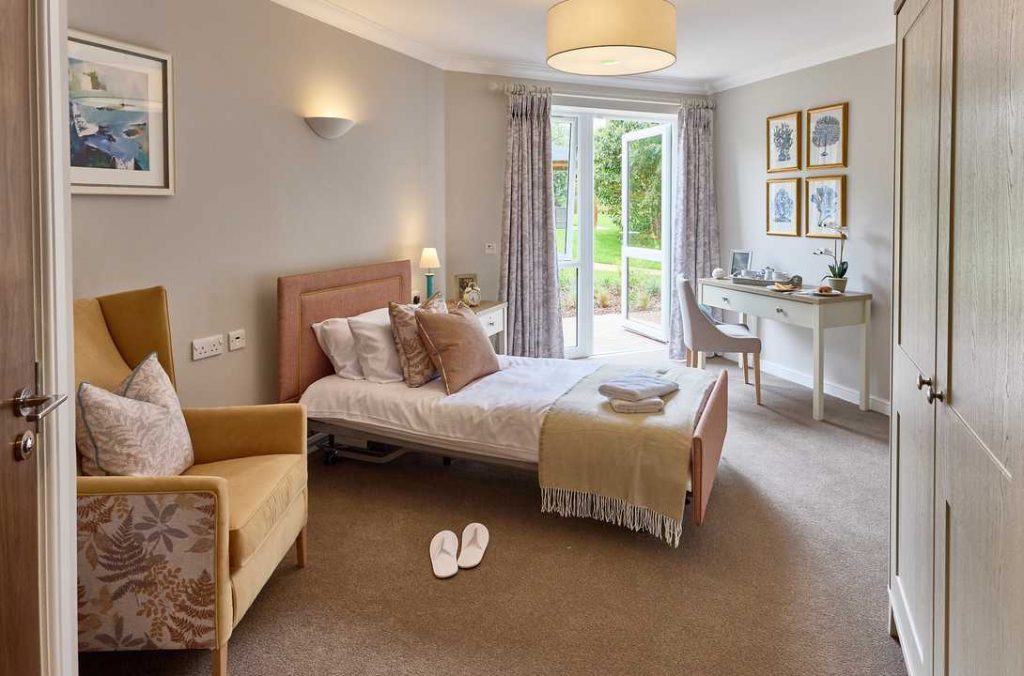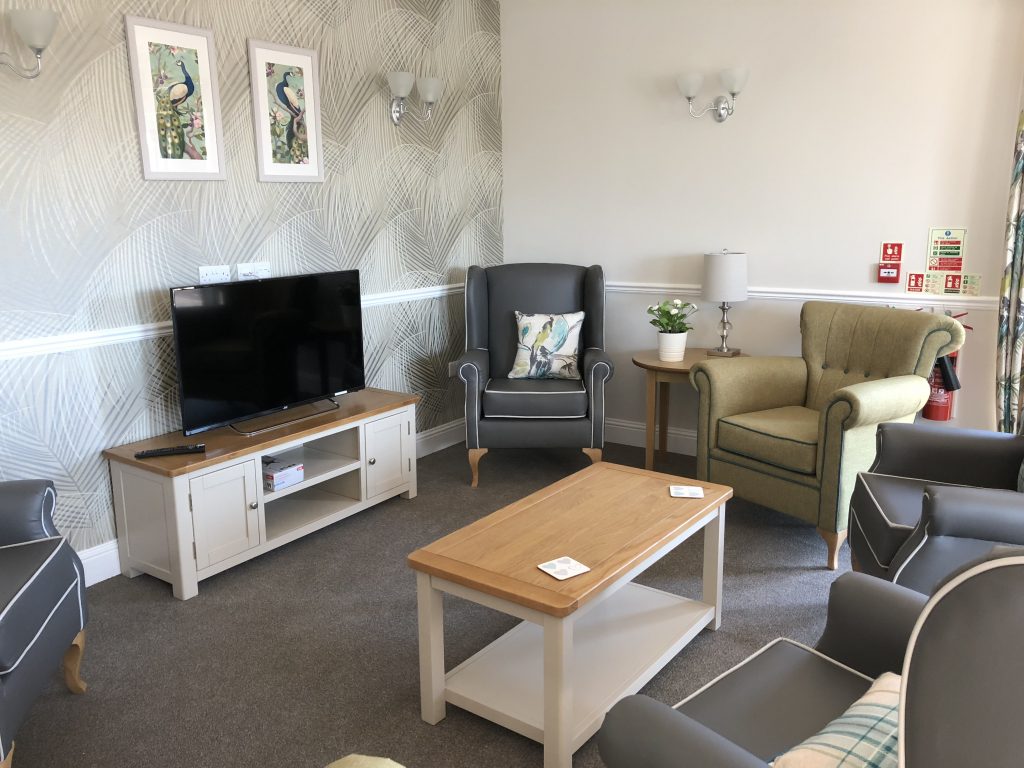The Benefits of Care Home Refurbishment
- Improved Facilities: Refurbishment enhances communal areas, making them more conducive to social interaction and providing easy access to outdoor spaces, promoting residents’ well-being.
- Enhanced Comfort: Upgraded furniture and warm interior aesthetics create a comfortable and homely environment, prioritizing residents’ physical and emotional comfort.
- Better Care Services: Regular updates and modernizations in equipment and facilities improve the quality of care, accommodating diverse health needs and sensory requirements of residents.
- Increased Attractiveness: Upgraded facilities attract more residents, enhancing occupancy rates and profitability while also attracting top-quality staff.
- Safety and Accessibility: Retrofitting handrails, installing ramps, optimizing lighting, and incorporating motion-sensor lights enhance safety and accessibility for residents, reducing the risk of falls and accidents.
- Promotion of Well-being: Designing spaces for relaxation, social interaction, and group activities fosters mental and emotional well-being, combating loneliness and promoting a sense of community.
- Integration of Technology: Implementing smart home technologies, assistive devices, and telehealth solutions improves care delivery, medication management, health monitoring, and access to healthcare services.
Care homes should be built to last, giving certainty and quality to an establishment.
For many care homes the wear and tear of time, as well as the progression of technology, makes care home refurbishment imperative.
Of course, refurbishments aren’t always required for homes which have only recently been built, but the demand on care homes means there are a variety of benefits to refurbishing properties at certain points.
Here are just a few of the benefits for residents:

Ways to improve a care home facilities
Through refurbishment, care home facilities can improve drastically, offering a better quality of life and meeting the varied needs of residents.
From minor changes to large-scale renovations, new and improved facilities can make an enormous difference.
Communal areas can be redesigned to encourage interaction; whether that’s a simple conversation or a leisurely board game between residents.
Make it easy for residents to look out onto the communal garden or outdoor space – admiring flowers or water features will be a welcome change from the television.
Said outdoor spaces should be easily accessible, too; whether they need assistance or not, residents should know they can get out into the garden if they want to.
More comfortable for residents
Comfort is high on the list of priorities for many ageing residents. With the latest upgrades to furniture, residents can spend their days in greater comfort.
Seating, for example, should be adjustable so that residents can choose a configuration that best suits their needs.
As well as the literal comfort of seating and bedding, the style of furniture should be warm and welcoming.
Although care homes are healthcare facilities, interiors should avoid a cold, clinical aesthetic – residents should be made to feel at home.
Improvements in care after a care home redesign
With so many different health issues, along with a population which is living for longer, facilities need to be regularly updated with the latest equipment and to respond to a myriad of conditions.
Residents’ sensory requirements should be catered for; sensory rooms are increasing in popularity as their effectiveness becomes more apparent.
While commonly associated with learning difficulties and conditions such as autism, they’re also known to be beneficial to people with dementia, those who have suffered a stroke and people with vision/hearing issues. Accommodating for sensory requirements can improve moods and increase the trust a resident has in staff and their surroundings.
Links should be established with a local GP practice for ease of care and assistance, should it be required.
Regular visits from healthcare professionals like chiropractors and opticians should be scheduled; this helps the facility to better support their residents.

Where these factors help to make life better for the residents in a refurbished care home, it also brings benefits to the providers of the care homes.
The better the facilities, the better the care and, therefore, the more highly regarded it is as an establishment.
This will help attract more residents and increase occupancy as well as profits for a flourishing care home. On top of this, when a care home is regularly refurbished to equip staff properly in the job of providing care, it’s more likely to attract the best staff in the industry.
The benefits of care home refurbishment are numerous and tend to lead to further benefits when carried out properly, particularly when residents are at the heart of things. Leaving a care home to become outdated can result in a steady decline in standards and satisfaction levels.
How to maximise safety and accessibility
One crucial aspect of care home refurbishment revolves around improving safety and accessibility for residents. As residents age, their mobility may get worse, meaning adjustments within the facility to accommodate their needs effectively will be necessary.
Retrofitting handrails in hallways and bathrooms can significantly reduce the risk of falls, which are a big concern in care homes. Installing ramps or lifts ensures that residents with mobility aids such as wheelchairs can navigate the premises with ease too.
Optimising lighting throughout the care home is also key. Adequate lighting reduces the chance of accidents and promotes a feeling of security, particularly during nighttime. You could even use motion-sensor lights in common areas and corridors to further boost safety while conserving energy.
How to promote mental and emotional wellbeing in a care home
Refurbishment plans should not solely focus on physical aspects of the home but also prioritise mental and emotional wellbeing. For example, creating spaces that encourage relaxation and social interaction can significantly improve residents’ overall quality of life.
Similarly, designated relaxation areas with comfortable seating can give residents a space where they can unwind and recharge, something which can really help promote emotional wellbeing.
As well as this, promoting social engagement is vital for combating feelings of loneliness and isolation among residents. By redesigning communal areas to facilitate group activities and gatherings, care homes can create a stronger sense of community. Activities like group therapy sessions, book clubs or arts and crafts sessions not only stimulate residents cognitively but also help create meaningful social connections.
Embrace technological advancements
Integrating new technology into care home refurbishment projects can also really improve the delivery of care services.
Implementing smart home technologies, such as automated medication dispensers and remote monitoring systems, helps with medication management and enables staff to monitor residents’ health status more easily. Assistive devices, such as wearable health trackers and fall detection sensors, can also promote safety and enable speedy intervention in case of emergencies.
It’s also worth exploring telehealth solutions, allowing for virtual consultations with healthcare professionals, which in turn reduces the need for residents to travel off-site for appointments.
Aedifice Partnership is a leading consultancy and project management firm specializing in delivering high-quality projects across various sectors, including care homes, residential properties, education establishments, and commercial properties.
Our range of services includes project management, chartered building surveys, CDM and quantity surveying among others.
For further details on the care home refurbishment services Aedifice Partnership offer, get in touch with our helpful team today.



